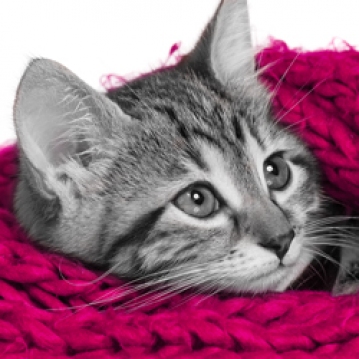
It makes sense that environmentally enlightened cat owners would want cat litter made from natural products that will not potentially compromise their health or that of their beloved pets. Many mass-market cat litters contain significant amounts of silica dust which has been linked to upperrespiratory issues in cats and even humans. Likewise, the chemical fragrances in many cat litters can also be toxic to cats.
Yet another issue is the sodium bentonite clay in “clumping” cat litters. The fact that this type of clay can swell up to 15 times its original volume when a cat urinates or defecates into it makes it an excellent cat litter substrate, as waste clumps can be scooped out and filled in without changing the entire litter box. When cats ingest this material, it can cause gastrointestinal distress that in some cases can lead to death. Also, the clay commonly used can be derived from environmentally destructive strip mining.
Thanks to increased concern for cats’ health and the environment, there are plenty of greener options out there. To wit, Yesterday’s News cat litter is made from recycled newspaper and is reportedly three times more absorbent than clay. While it is non-toxic and contains no fragrances, its makers say it is still tough on odors and is 99.7 percent dust-free. It also comes in recyclable-paper packaging.
Wood shavings and sawdust also make good cat litter substrates. NEPCO’s Cedarific Natural Cat Litter is a blend of hardwood and cedar chips with no clay or silica dust. Besides being inexpensive, it is easy to handle, has a pleasant odor, and is biodegradable and compostable. Other wood/ sawdust alternatives include Feline Pine, which is made from dust-free pine chips, and Better Way Cat Litter, which combines clay with cedar chips for natural odor control. Yet another great choice is Eco-Shell’s Purr & Simple Cat Litter, made from a proprietary blend of fibrous material from annually renewable tree-nut crops. SwheatScoop Natural Wheat Litter keeps odors at bay through the power of natural enzymes in renewable wheat crops; it is low-dust and low-tracking, besides being biodegradable and compostable.
Meanwhile, World’s Best Cat Litter is made from whole-kernel corn. And Benevo Cat Litter is made from non-genetically modified maize and other vegetable derivatives.
Frugal eco-conscious cat owners might consider making their own cat litter by repurposing everyday materials that would otherwise end up in the waste stream. Plain sawdust makes great cat litter, but doesn’t control odor as well as other substrates and might be hard to find in urban areas. The website treehugger.com offers instructions on how to turn old newspapers into cat litter; the process is a bit involved but can save money while extending the life of discarded newsprint.
Cat litter made from natural materials can also be composted as a way to reduce waste while creating rich soil for the garden. The Glenbrook North Zero Waste Blog in Vancouver, British Columbia, Canada, provides instructions on how to get healthy compost from cat litter derived from wood, sawdust or vegetable products.
CONTACTS:
Yesterday’s News, www.yesterdaysnews.com; NEPCO, www.nep-co.
com; Treehugger’s “Make Your Own Newspaper Cat Litter,” www.treehugger.com/ culture/pet-topic-makeyour-own-newspapercat-litter.html; Glenbrook North Zero Waste Blog’s “How to Compost Your Cat’s Litter,” http:// glenbrookzerowaste.wordpress.com/2010/03/30/ how-to-compost-yourcats-litter.
EarthTalk® is written and edited by Roddy Scheer and Doug Moss and is a registered trademark of E - The Environmental Magazine (www.emagazine.com).
Send questions to:
earthtalk@emagazine.com. Subscribe: www.emagazine.com/ subscribe. Free Trial Issue: www.emagazine.com/trial.























